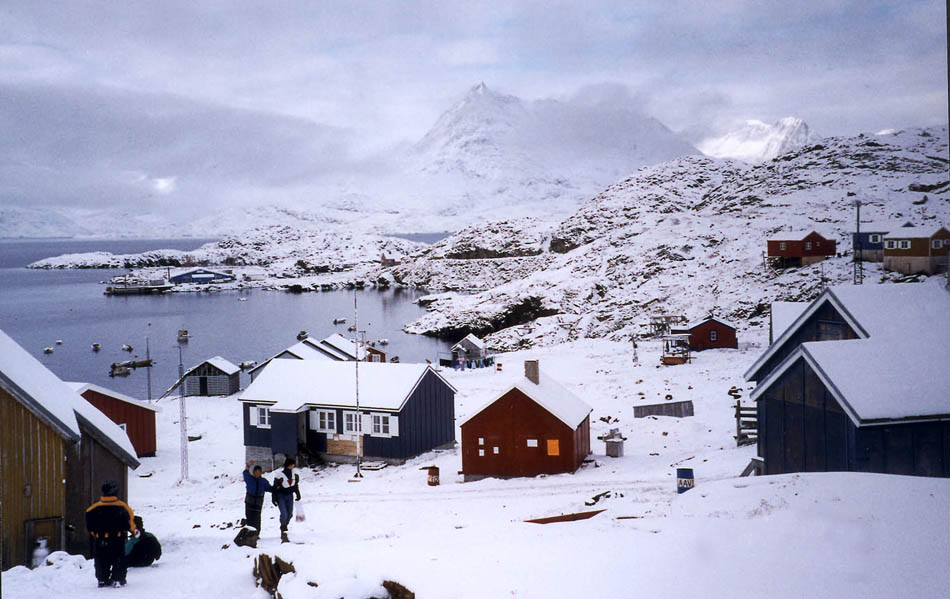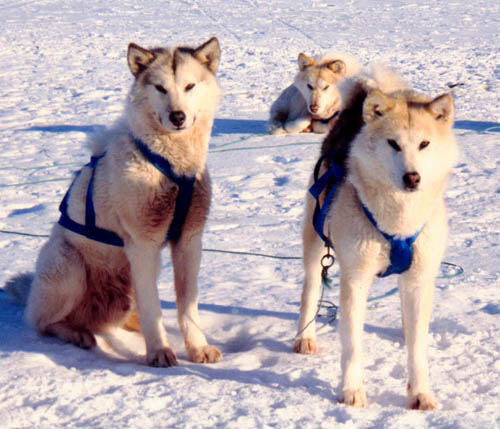Table of Contents
*
Nunavut Quest 2000:
More Than a Race
*
Nunavut Quest 2000:
Drivers' Meeting
*
Nunavut Quest 2000:
On the Trail
*
Nunavut Quest 2000:
Race Results
*
Poem: Dogs of the Sledge Trail
*
Inuit Demand Inquiry of Historical Dog Extermination Policy
*
Memories
*
Nunavut's Official Symbols
*
Niels Pedersen, D.V.M:
The Veterinary Service in Greenland
*
ISDI Foundation:
Acknowledgements
*
Sled Dog Problems in Iqaluit
*
Baking: Dog Cookie Recipe
*
Crafts: Save That Hair
*
Behavioral Notebook:
Social Order
*
Book Review:
Polar Dream
*
In My Humble Opinion:
Sharing the Trail
*
Update:
Ihe ISDVMA Meeting
Navigating This
Site
Index of articles by subject
Index
of back issues by volume number
Search The
Fan Hitch
Articles
to download and print
Ordering
Ken MacRury's Thesis
Our
comprehensive list of resources
Talk
to The Fan
Hitch
The Fan
Hitch home page
ISDI
home page
Editor: Sue Hamilton
Webmaster: Mark Hamilton
Contents of The Fan Hitch Website and its publications are protected by international copyright laws. No photo, drawing or text may be reproduced in any form without written consent. Webmasters please note: written consent is necessary before linking this site to yours! Please forward requests to Sue Hamilton, 55 Town Line Rd., Harwinton, Connecticut 06791, USA or mail@thefanhitch.org

Typical settlement in my district Pedersen photo
The Veterinary Service in Greenland
by Niels Woeldiche Pedersen, D.V.M., Kongens Lyngby,
Denmark
When, in 1995, I accepted an offer from The Greenlandic Home Rule administration to become District Veterinary Officer in Northern Greenland, I didn't really know what I was accepting. At that time I was running a small animal veterinary hospital in Copenhagen, Denmark. I had 20 years of professional experience but to be honest, we only saw very few sledge dogs in Copenhagen. I did, though, have at least some experience with sledge dogs since on two occasions I had joined the vet crew for the Alpirod dog sled race.
In 1995 there were three veterinary positions in Greenland. One was in Qaqortoq (far South), one in Nuuk with the administration and "mine" in Ilulissat. The position in Ilulissat was opened only the year before, but the first colleague there only lasted a few months for family reasons. Therefore this position was vacant, and I accepted it. I sold my hospital in Copenhagen and my wife and I moved to Ilulissat in November 1995.
There are approximately 30,000 sledge dogs in Greenland. The country is divided into two "dog parts". In the South there are no sledge dogs at all. They are not allowed there as it is sheep farming area with plenty of sheepdogs and pet dogs. Sledge dogs are only allowed north of the Polar [Arctic] Circle on the west coast and all over the east coast. In the sledge dog districts no other dogs are allowed except for a few police dogs. This division is enforced very strictly in order to keep the sledge dog breed free from genes from other breeds. The purpose is to preserve the very unique properties of the Greenlandic dog.
My district would be all the sledge dogs districts, which is more than 1 million sq. km, and to cover this huge area would mean a lot of traveling! My duties not only included looking after the dogs. I was also supposed to carry out some meat inspection on reindeer, inspection of public kitchens, the supervision diseases among wild life, and much more.
Typical settlement in my district. Most sledge dogs in Greenland are working dogs. The owners use them every day to go fishing or hunting and they are not pets at all. The owners consider the dogs the same way a farmer considers his cows or pigs and treat the dogs according to this. Some owners do have the dogs for pleasure rides, mostly Danes working there. It is very unusual to find a pet sledge dog. That doesn't mean dog owners are not proud of their dogs. Some hunters are very clever drivers and use the dogs for work as well as for racing. These dog owners take very good care of the dogs and feed them well year around. Other dog owners, fortunately not so many, are hardly interested in their dogs and their poor animals are more or less left to themselves outside the hunting season.
The use of snowmobiles for hunting and fishing is prohibited. That gives the sledge dog a highly special position among the population in Greenland. Every hunter has to rely totally on his dogs and their ability to assist him in all conditions.
The dogs are kept outdoors all year and must be chained all the time. Loose dogs are shot by municipal staff because of the danger they present to people and other animals. Despite of this, people are killed by dogs almost every year in Greenland. Accidents happen not because the dogs are fierce or aggressive but because Greenlandic dogs still possess very strong natural instincts. That means that dogs, when in a pack, will start hunting if something awakens their hunting instinct, for example a child running or a drunk person reeling. Unfortunately any loose dog will normally soon join with others and form a pack. That is why single dogs are shot as well as dogs in packs, the only exception being bitches with puppies younger than 6 month and puppies themselves. To protect these bitches the owner can fetch a red painted piece of wood from the municipal office to attach to the dog’s collar.
In earlier times, a dog owner would keep his dogs right outside his house, and some still do in the settlements; but most dog owners in towns keep their dogs in special appointed areas now. A long chain is attached to the rocks and then the dogs are chained to this main chain two by two by 3-4 meter long smaller chains. The dogs are positioned in way that allows them just to touch each other but in a way so they can not involve in fights. There are no shelters for the dogs. Some dog owners have one small dog house for the bitch, when she gives birth and during the lactating period . Many bitches are left to do this in the snow or on the rocks.

Rest by the
fiord
Pedersen
photo
A difficult season for many dog sites is the spring, when the snow melts. I have seen on many occasions how dogs have been forced to stand up 24 hours, because of melting water - as lying down would mean drowning. The new legislation issued in 1998 specifically points out that a dog must have access to a dry area for sleeping.
Rabies, parvovirus infection and distemper are widespread in Greenland. Therefore vaccination against these diseases is mandatory. All pups are vaccinated the first time before they are six month old and then revaccinated every third year. These vaccinations are free and are carried out by lay staff from the community. This program will protect the animals quite effectively against rabies and distemper. Since parvovirus is found all over the place, it is likely that recurrent contact with this virus will lead to a natural lasting immunity. Should a dog owner wish to vaccinate against parvovirus every year, he must pay for the vaccine himself.
Despite the free vaccination program, many dog owners are
reluctant to have their dogs vaccinated. There are many
reasons for this, among which superstition is a very
important one. I will report on that issue in a
later letter, but the result is, that many dogs die every
year because they are not vaccinated and because it is
impossible to enforce the vaccination program effectively
if the owners don't cooperate. The last outbreak of
distemper that I experienced in 1998 killed 1000 out of
6000 dogs in Ilulissat alone!
The Fan Hitch is delighted to welcome Niels Pedersen as a contributor. Be sure to visit his home page at hyperlink <http://hjem.get2net.dk/woeldiche> for more pictures. Niels' new book, written in Danish, is about veterinary work, sledge dogs, society, travel, general life etc. It is available through his web site. For those of us who cannot read Danish, there will be more information in the next Fan Hitch as to how to get a copy. While there is a discussion of publishing an English version, it is not certain at the time if this will come to pass. So don't wait to get your copy now for its fabulous photos of a beautiful island and some really neat dogs.